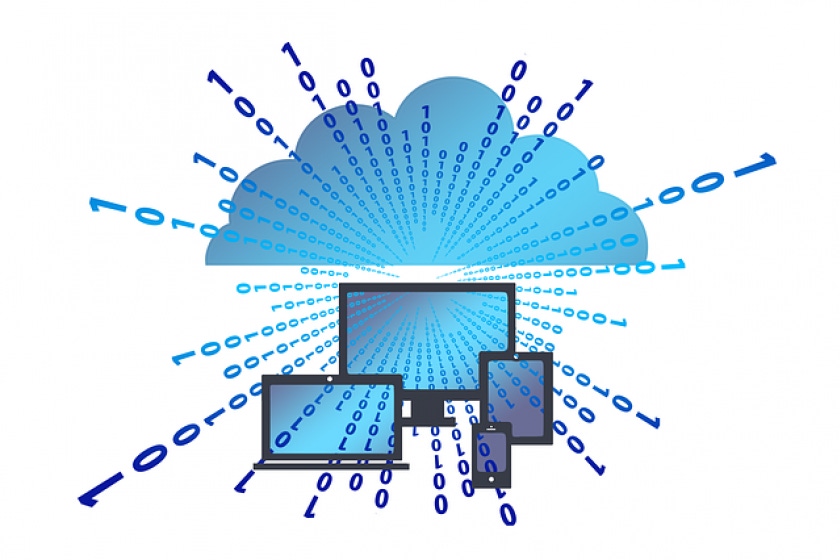Chip Shortage Workaround: A Chance to Move to Cloud Desktops
As wait times for laptops and other equipment continue to drag on due to the chip shortage, cloud desktops are gaining more interest.
December 13, 2021

The pandemic seriously disrupted the supply chain, which was already dealing with a shortage of the materials needed to manufacture computer chips. In the automotive industry, for example, it’s having an outsized impact. In addition, COVID-19 spikes in strategic manufacturing areas are slowing production. Estimates of when chip makers will catch up to demand range from the end of this year to two years from now.
Instead of waiting around, organizations can apply the concept of right-sizing to their business’s digital needs and swap hardware for software and cloud-based solutions.
Chip demand is coming from across sectors
Today, almost every industry relies on chips; there are more buyers than products. Some of the most advanced chips are found in PCs – and it’s likely that brands such as Dell, Lenovo, and HP will inflate prices for laptops and other equipment to cover the rising costs of chips. Companies inside and outside the tech sector have been significantly affected by the global computer chip shortage; wait times for equipment are increasing, and supply chains are being severely disrupted.
Pause or cloud?
Businesses are in a sink-or-swim situation, but there’s an opportunity here to move away from hardware-based equipment to more cloud-based solutions. This was a trend already kicked into high gear because of the pandemic; even as lockdowns lifted, many organizations around the globe recognized that remote and hybrid work was here to stay.
It may seem that the cloud would be similarly affected by the chip shortage, but that’s not the case. The shortage is having less of an impact on the public cloud service providers because of their buying power. They purchased a great deal of infrastructure years in advance of demand and are busy adding additional capacity all the time.
Worldwide end-user spending on public cloud services was predicted to grow 18.4% this year, to total $304.9 billion, according to Gartner. And this has really seeded the need for DaaS and cloud-hosted desktops, which offer many clear business benefits – especially in light of the chip shortage.
Cloud desktops don’t require waiting for available laptops – a key advantage right now during the global chip shortage. A cloud PC/cloud desktop is a virtual desktop; it’s just delivered from the cloud rather than requiring a physical device.
Advantages of cloud desktops
There are five primary advantages to using cloud desktops. The first is unlimited performance. Traditional VDI has been plagued by latency issues, but cloud PCs can solve that problem, which makes cloud PC users love the performance. Cloud PCs are also able to take advantage of the latest technology; they never become obsolete and can be upgraded at any time.
The second advantage is greater business agility. The agility that cloud PCs offer is truly unprecedented because the PCs can be spun up or down in minutes, anywhere in the world, to accommodate changing business needs.
Better security is the third advantage. Keeping every physical PC and workstation in a distributed organization upgraded and patched is essentially impossible for an IT team. This leaves organizations susceptible to security breaches, either from inside or outside the organization.
Comprehensive observability is a fourth advantage. The ability to visualize performance and behavior patterns for every PC in your organization, across every office, home office, hotel, customer site, and so on, would provide immense value. You could identify a possible ransomware attack and immediately take defensive measures. You could understand who is having connectivity issues and why; you could know if it's just a handful of users or an entire cloud region that's affected. That's not possible with physical PCs or even with most virtual desktop solutions.
A fifth advantage of cloud desktops is flexible pricing models. Cloud PCs can help an organization optimize its resources. A flat rate price could make sense, or maybe hourly pricing works better, depending on the usage profile, whereas a physical PC might sit idle 99% of the time – which is an inefficient waste of money.
The cloud awaits you
IT leaders have had to scramble since the chip shortage began, as wait times for laptops and other equipment continue to drag on. Since necessity is the mother of invention, those leaders have an opportunity to re-architect their IT structure by moving from hardware-based solutions to cloud-based ones, such as DaaS. There’s no need to wait for laptops at inflated prices, and performance is better with cloud desktops. Consider these and the other advantages noted above and consider how cloud desktops could benefit your organization.
Brad Peterson is vice president of marketing at Workspot.
About the Author
You May Also Like




